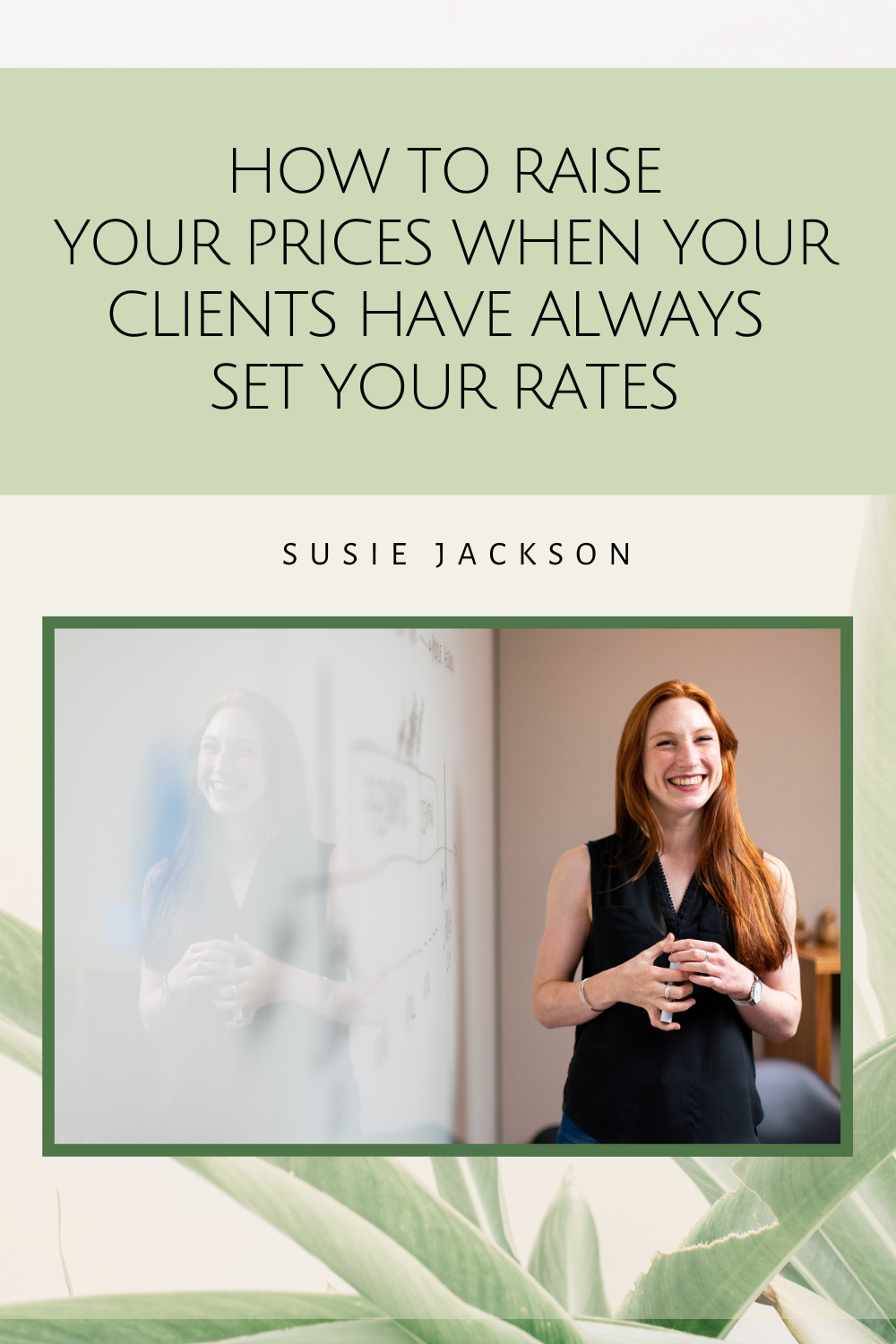Five Things to Avoid When Deciding How to Price Your Services
How much should I charge? It’s the fundamental question that all freelancers ask themselves fairly early on in their careers. And it isn’t an easy one to answer, partly because there seems to be a lack of transparency surrounding freelance rates but also because I truly believe there is no one-size-fits-all rule when it comes to pricing.
Yet how you respond to this question will determine the path your business takes. Will you find yourself in a constant race to the bottom or will you have a clear pricing strategy in place that enables you to earn enough without having to work round the clock?
In this blog post, I’m setting out five of the most common mistakes I see freelancers making when they price their services. By explaining why you should avoid the below, I hope you’ll get a better idea of what you need to be taking into consideration when you decide how much to charge.
What not to do when pricing your services
1) Don’t overestimate what you can do in the time you have available
When deciding how much to charge, I often see freelancers overestimating how much paid work they can fit into their working days. If you work from 9am to 5pm, Monday to Friday, that’ll be 8 hours of work a day or 40 hours of work a week, right? Unfortunately, that’s not really the case. Just because you show up for business between those hours doesn’t mean you’ll be able to do that many hours of actual work.
We need to get out of the employee mindset where we’re getting paid to be physically present in the office (pre-Covid times!) for a set number of hours each day. As a freelancer, you don’t get paid when you’re having lunch, preparing a cup of tea or coffee, or even taking a bathroom break. And what about all the administrative and marketing tasks you have to do to keep your business running smoothly and developing steadily? Yes, you’re working, but you’re not earning money directly as a result of performing your duties as a business owner.
You need to be realistic about how many hours of paid work you’ll actually be able to manage in a given day, and then you need to build the time you spend on all these other business-related tasks into your rates. The amount of paid work freelancers do in a day varies widely depending on how much time out of their days they want to spend working, how long they are able to maintain their concentration, and how many unpaid tasks they outsource. To give you an example, I usually average about 2.5 hours of billable work a day, but I know other freelancers who do around 6 hours.
In order to find out how much billable work you’ll be able to tackle on an average day, I recommend tracking your time so that you can understand exactly where your working hours are being spent. But even then, don’t assume you’ll be busy all the time. Every freelancer experiences peaks and troughs at some time or other, so don’t forget to account for those quieter periods as well.
2) Don’t price your services too low
Positioning yourself too cheaply is never a good idea. First of all, it can raise concerns among clients about the quality of the service you’ll provide them with. The generally assumed rule that you get what you pay for tends to be applied to freelance service providers as well.
But secondly, by setting your rates at the low end, you’re also more likely to attract the wrong kind of customer, or rather, the type that only really cares about the price. When you find yourself working with customers whose main priority is cost, the only thing you can really do to make them happy is offer the lowest price on the market. The quality of the service you offer won’t matter much to them, and you’ll find yourself in a constant race to the bottom. Wouldn’t it be nicer to work with clients who don’t just look at the price but also value what you bring to the project? The ones that appreciate you are more likely to be willing to pay a higher rate for your work.
3) Don’t enter price negotiations without a clear minimum in mind
When quoting for a project, setting yourself a minimum amount that you’d be prepared to do the job for before entering into a negotiation can help you avoid accepting a price that’s too low. It’s so easy to be pushed down on price, especially when your client is a good negotiator themselves! But if you have a minimum in mind that you know you can’t and won’t go below, you’re more likely to stand firm and achieve a rate that makes the project worth your while.
4) Don’t quote your minimum price
Once you have your minimum in mind, don’t quote it! If you’d be more than happy to earn your minimum fee on a project, that’s great! But don’t quote your minimum straight off, otherwise you’ll have nowhere to go if the client starts to negotiate. In some companies and cultures, it’s common for purchasers to ask for a discount no matter what the starting rate is. Sometimes it comes down to habit, while on other occasions clients want to see if you’re willing to collaborate with them and meet them halfway.
By quoting higher than your minimum, it will give you some leeway for negotiation. And if the client accepts your offer straight away, that simply means more money for you!
5) Never set your rates based on what someone else in your industry is charging
This is one of the most common mistakes I come across among freelancers. Those starting out tend to base their rates on the rates other freelancers are offering.
In some ways, it’s completely understandable; you don’t know how much to charge so you follow the example of someone who has already established a foothold in the industry you want to be successful in. However, you never know how that other person decided their rates. Perhaps it was to undercut someone else, in which case, it’s just going to drive prices down. Or maybe their circumstances are completely different from yours. It could be that they are freelancing part-time in addition to working a full-time job or that their living expenses are lower than yours because of where they’re located or who they share their home with. Do you know if the rates they charge are allowing them to contribute to a pension? Or might they be working incredibly long hours just to make ends meet?
What’s important is that you set your rates in a way that makes sense to you (no one else) and that takes into account your individual circumstances.
In my Charge with Confidence programme, I help freelancers understand how much they should be charging based on their personal circumstances.
If you’d like to feel more confident when pricing your services, you can find out more about the programme by clicking on the button below. I’ll help you set a minimum rate and prices that work for you with a view to developing a sustainable business that’ll grow with you and support you in the long term.
Hi, I’m Susie
I mentor freelancers on pricing so you can earn a decent living doing what you love.
I’m a translator, editor, chocoholic, crochet addict, animal lover, and budding gardener (get it?) who loves empowering others to achieve their goals.












